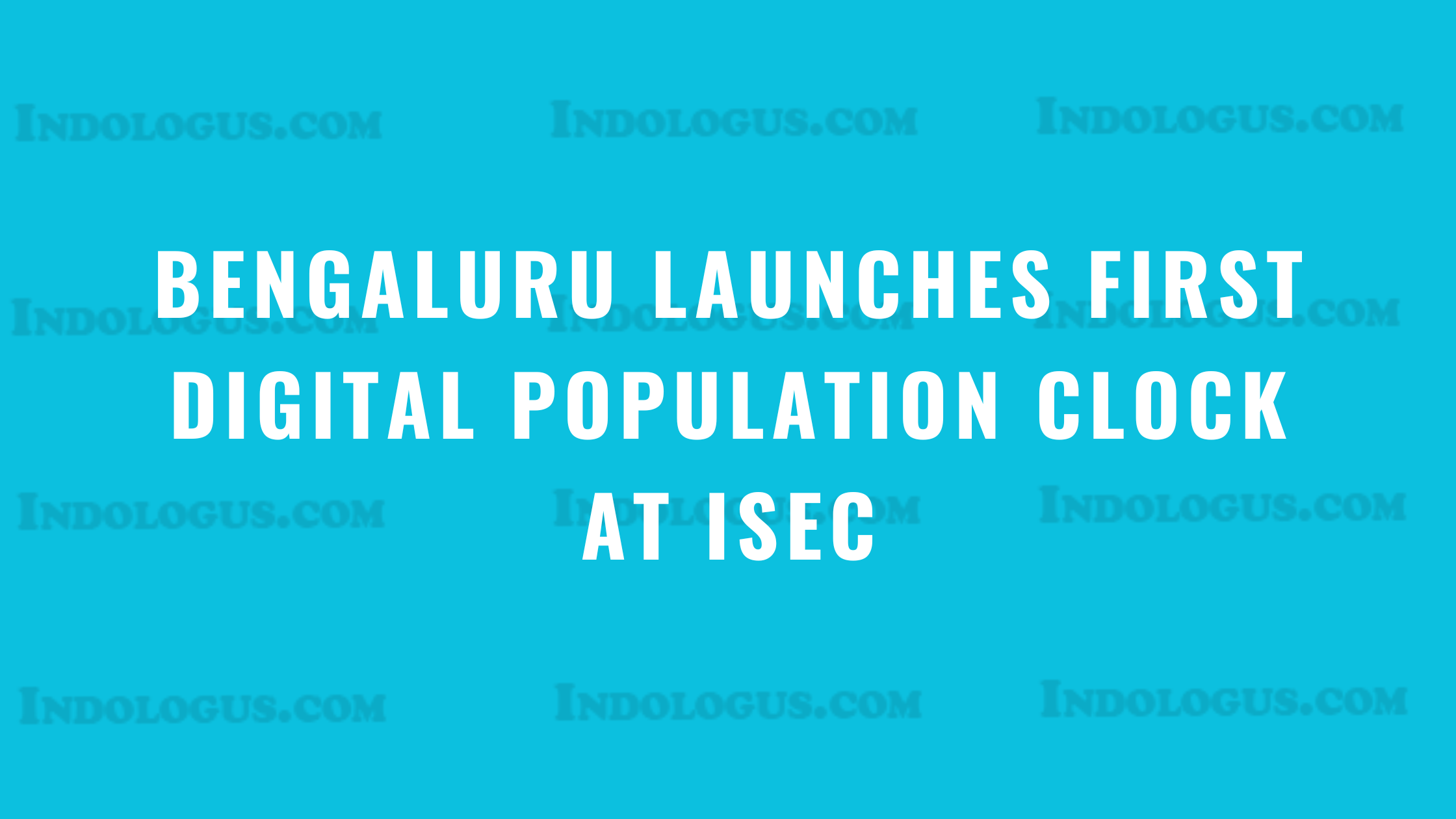On November 8, Bengaluru celebrated the launch of its first-ever Digital Population Clock at the Institute for Social and Economic Change (ISEC). This state-of-the-art installation offers real-time updates on the population of Karnataka and India, making demographic data easily accessible to the public, researchers, and policymakers. The project is a joint effort between ISEC and the Union Ministry of Health and Family Welfare (MoHFW).
Key Features of Bengaluru’s Digital Population Clock
- Strategic Location: The clock is prominently placed at the entrance of ISEC to engage and inform visitors.
- Real-Time Population Data:
- Karnataka’s population count updates every 1 minute and 10 seconds.
- India’s population count updates every 2 seconds.
- Comprehensive Data Sources: The population clock uses calculations based on key demographic indicators, including:
- Birth and death rates
- Migration patterns
- Life expectancy
- Fertility and mortality rates
- Census Data Workstation: In addition to the clock, a dedicated workstation provides access to census data and advanced analytical tools. This feature supports in-depth demographic research and analysis.
Collaboration with the Ministry of Health and Family Welfare
The Digital Population Clock is part of a larger national initiative by the MoHFW, which aims to install similar population clocks at 18 Population Research Centres (PRCs) across India. The primary goal is to spread awareness about the implications of population growth and to support research that informs sustainable development and effective policy-making.
The Role of Population Research Centres (PRCs)
PRCs play a crucial role in conducting in-depth population studies and contributing to policy development. They provide technical expertise and support in key areas, including:
- Family Planning: Assisting in the creation of effective family planning strategies.
- Health Programs: Supporting public health initiatives through data-driven research and analysis.
This initiative underscores the importance of demographic awareness in achieving sustainable development and enhancing the effectiveness of health and family planning programs across the country.
Here are some multiple-choice questions based on the article:
1. Where was Bengaluru’s first Digital Population Clock inaugurated?
A) Indian Institute of Science
B) Vidhana Soudha
C) Institute for Social and Economic Change (ISEC)
D) Lalbagh Botanical Garden
2. What is the purpose of the Digital Population Clock at ISEC?
A) To display weather updates
B) To provide real-time population data for Karnataka and India
C) To track traffic congestion in Bengaluru
D) To monitor environmental pollution levels
3. How often does Karnataka’s population count update on the Digital Population Clock?
A) Every 30 seconds
B) Every 1 minute and 10 seconds
C) Every 5 minutes
D) Every 10 seconds
4. What additional feature is available at the ISEC related to the Digital Population Clock?
A) A weather forecasting station
B) A census data workstation with analytical tools
C) A digital library of historical records
D) A real-time traffic monitoring system
5. Which government body collaborated with ISEC to develop the Digital Population Clock?
A) Ministry of Home Affairs
B) Ministry of Environment, Forest, and Climate Change
C) Ministry of Health and Family Welfare (MoHFW)
D) Ministry of Education
6. How often does India’s population count update on the Digital Population Clock?
A) Every 5 seconds
B) Every 10 seconds
C) Every 2 seconds
D) Every 1 second
7. What is the main objective of installing population clocks at 18 Population Research Centres (PRCs) across India?
A) To improve traffic management
B) To raise awareness about population growth and support demographic research
C) To track economic growth in real-time
D) To monitor climate change impacts
8. What role do Population Research Centres (PRCs) play?
A) Organizing sports events
B) Conducting population studies and supporting policy development
C) Managing wildlife conservation
D) Developing software for healthcare
9. What type of data does the Digital Population Clock use for its calculations?
A) Economic growth rates
B) Migration patterns, birth/death rates, and life expectancy
C) Traffic congestion statistics
D) Water pollution levels
10. What key area do PRCs focus on to support public health?
A) Urban planning
B) Family planning and health programs
C) Renewable energy research
D) Agricultural development



